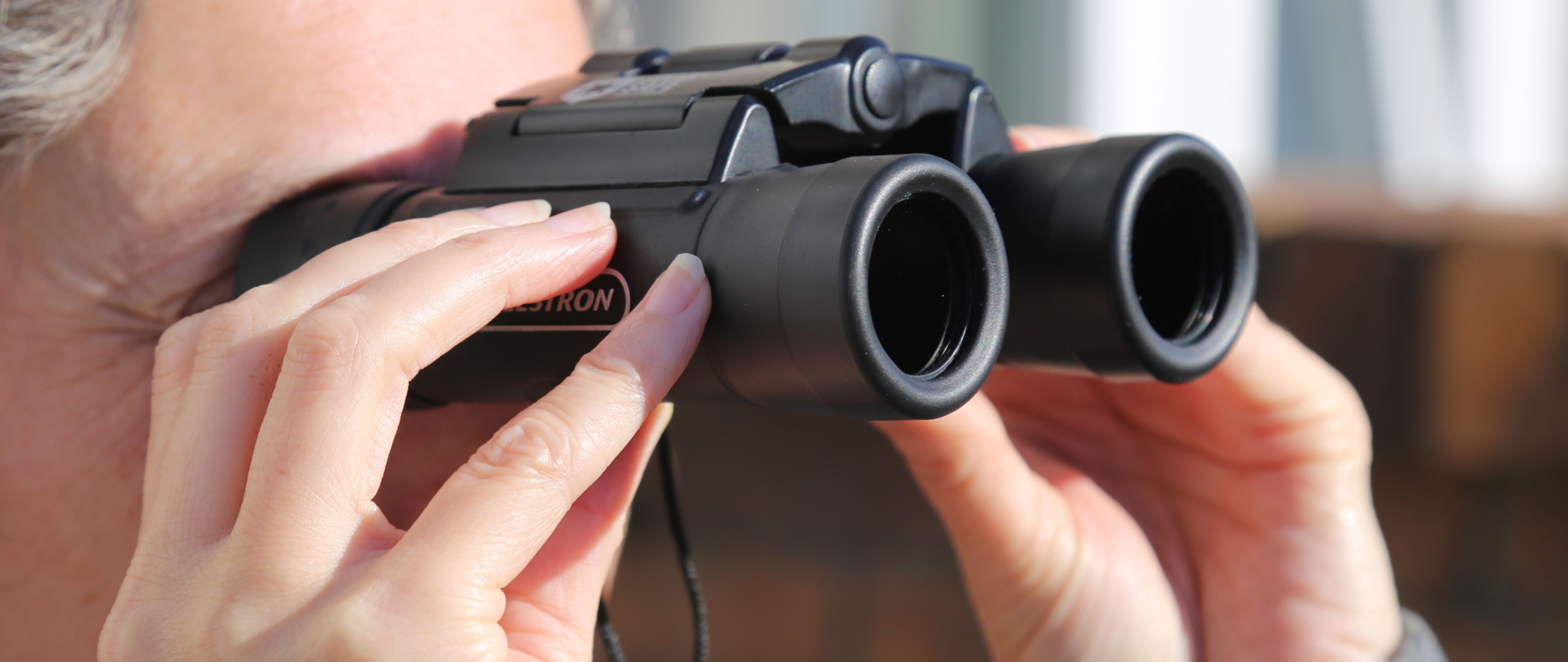Space Verdict
For an affordable alternative to solar eclipse glasses for safely watching North America's upcoming annular and total solar eclipses, look no further than this pair of compact, travel-friendly and impressive binoculars with built-in solar filters.
Pros
- +
Convenient and lightweight design
- +
Affordable price
- +
Very easy to use
Cons
- -
Lack of lens caps
- -
Some color fringing
- -
Lack of brightness
Why you can trust Space.com
This Celestron EclipSmart 10x25mm roof solar binoculars review comes as North America is in a golden age of solar eclipses. A 'ring of fire' annular solar eclipse on October 14, 2023, and a total solar eclipse on April 8, 2024 are the pick of the bunch, but there are also slight partial solar eclipses on both August 12, 2026 and January 26, 2028. Most of the attention before solar eclipses is on the availability of solar eclipse safety glasses, but here's another, better way to look safely at the sun during an eclipse.
A pocket-sized pair of solar binoculars that offer 10x magnification — handy when trying to see sunspots — the Celestron EclipSmart 10x25mm roof solar binoculars have permanent solar filters across their 25mm objective lens.
Add a compact design, a simple neck strap and a small case and these inexpensive solar binoculars should be seriously considered by anyone after a great view of solar eclipses without spending big.
Here's everything you need to know about the Celestron EclipSmart 10x25mm roof solar binoculars.
Celestron EclipSmart 10x25mm roof solar binoculars review
Celestron EclipSmart 10x25mm roof solar binoculars: Design
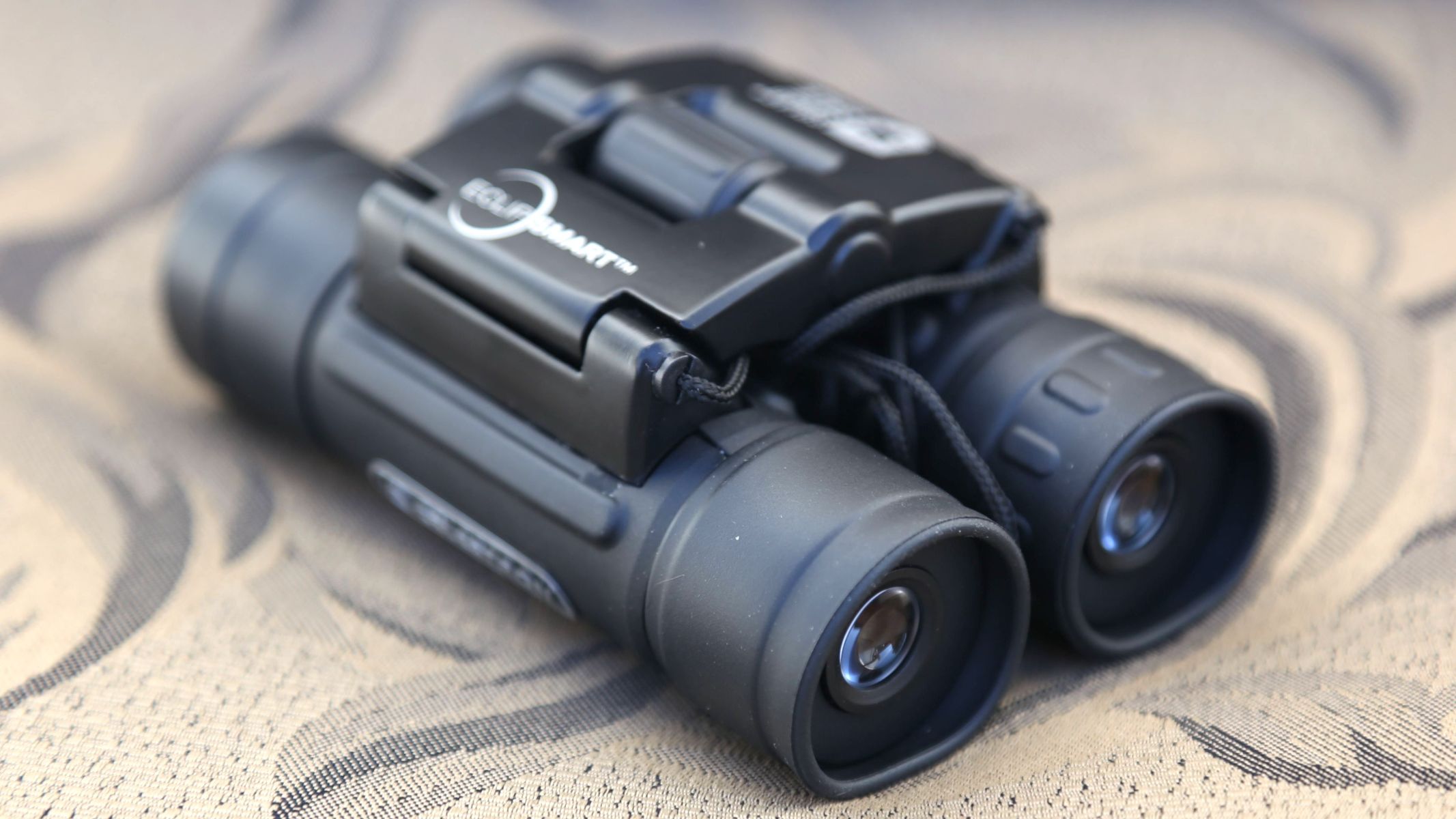
- Roof prism design keeps the body slim
- Lightweight and pocket-sized aids in portability
- Meets safety standard ISO12312-2 to ensure safe solar observing
The Celestron EclipSmart 10x25mm is mostly about convenience. Having a similar footprint and weight to a smartphone, they're designed to be travel-friendly, highly portable and light enough to wear around the neck for long periods. Since a solar eclipse can last up to three hours, that's crucial. The neck strap provided is little more than a piece of black cord, which is permanently secured to the binoculars. It's a little basic, but it does the job because these binoculars are extremely lightweight.
Naturally, they're all about safety first. Across the front of the objective lenses are non-removable polymer solar filters. They meet the all-important ISO 12312-2 standard and block infrared (IR), ultraviolet (UV and 99.99% of visible light.
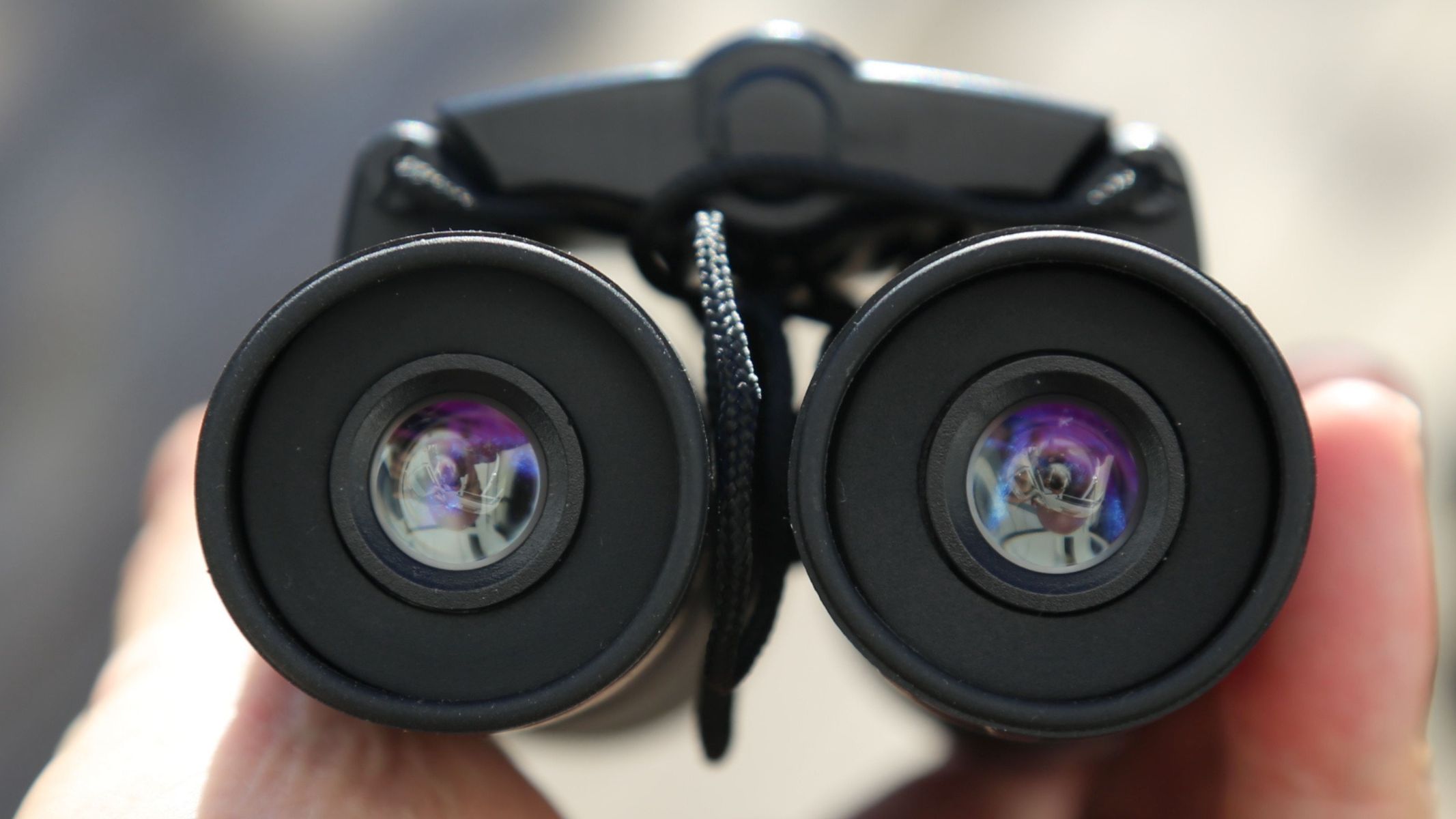
Design: Roof prism
Magnification: 10x
Objective lenses: 25mm
Exit pupil: 2.5mm
Eye relief: 0.4-in / 10mm
Weight: 11.15 oz / 316g
Dimensions: 3x2.2x4.5-in / 76x51x114mm
Durability: Water resistant
The left eyepiece has the usual diopter for calibrating to the user's eyesight and a central focus wheel on the hinge between the two tubes for focusing. What the eyepieces lack are any lens caps, but also much in the way of eye relief, which restricts how immersive the images of the sun are. However, since these are designed primarily for keeping an eye on the progress of the eclipse, the no-frills design suffices.
Breaking space news, the latest updates on rocket launches, skywatching events and more!
The product comes with a small neoprene pouch/carrying case, complete with a belt loop. That could be handy on eclipse day when you may find yourself standing for long periods while having to cope with lots of different types of gear. Also in the box is a cleaning cloth.
Celestron EclipSmart 10x25mm roof solar binoculars: Performance
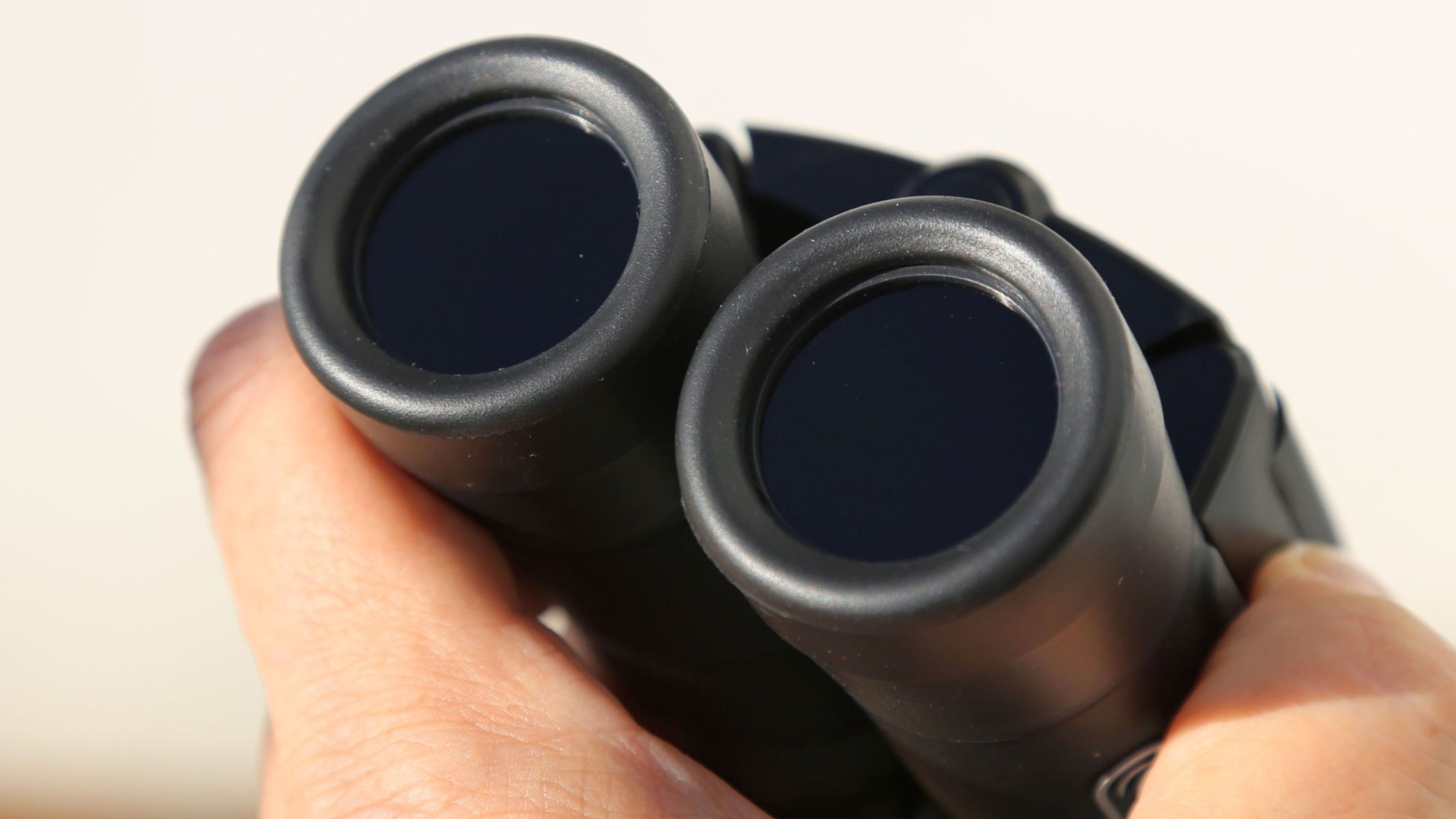
- Easy to find the eclipsed sun without issue
- Some color fringing around contrasted edges
- Image lacks brightness compared to premium solar binos
The Celestron EclipSmart 10x25mm is not about high-end solar observing. Although you can make out large sunspots on the solar surface within a blue-ish white image, it's largely meant to be an upgrade on solar eclipse glasses rather than a serious solar observing device. By magnifying the sun 10x it makes it much easier to follow the progress of the eclipse.
Point them at the sky and all you can see is the sun. Crucially, there's a wide field of view at 57-degrees, which makes it relatively easy to locate the sun, which isn't something that should be taken for granted (choose a pair of solar-filtered binoculars with higher magnifications than 10x and that becomes much more difficult).
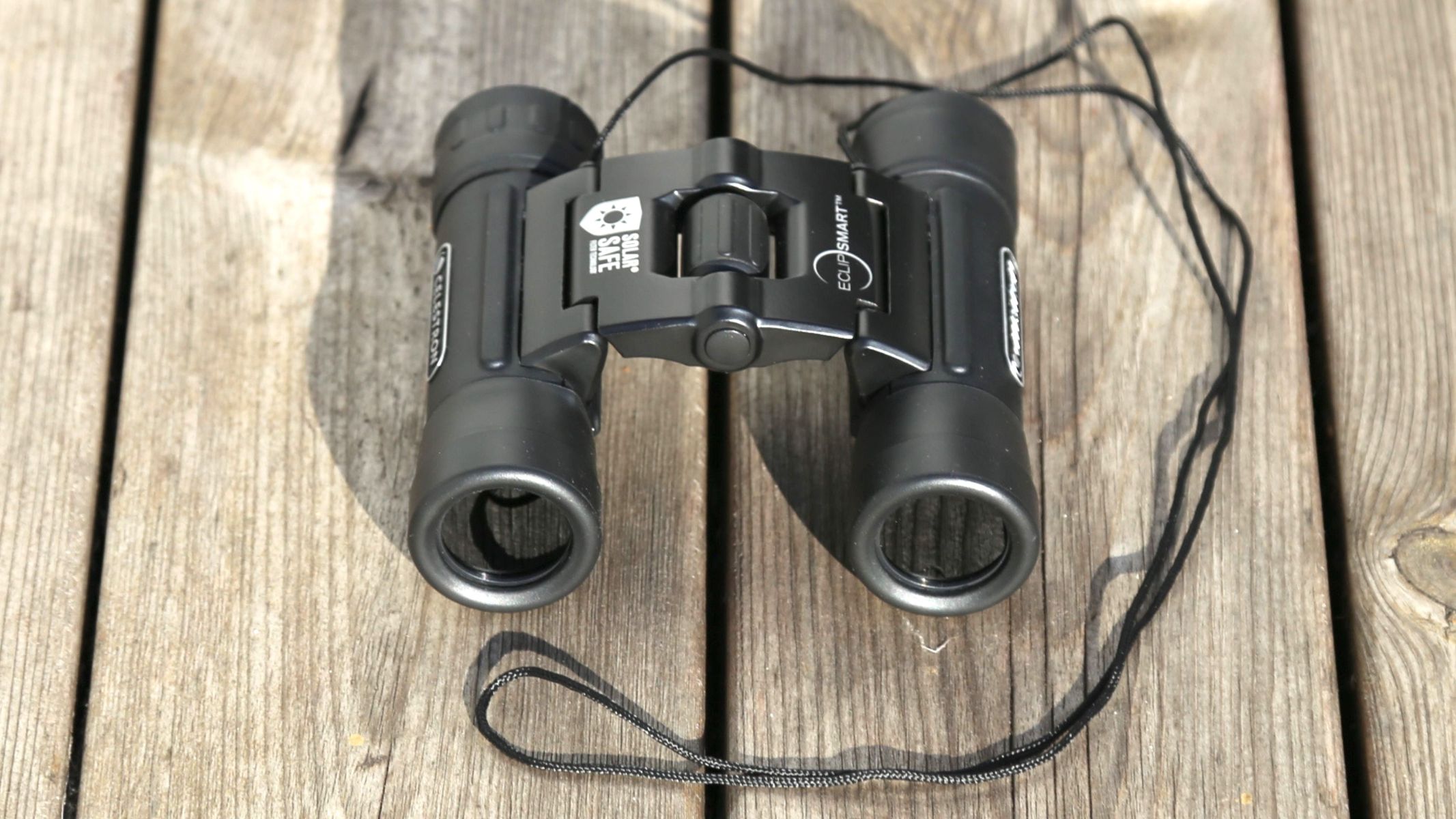
With a relatively low magnification, there's not a whole lot of detail to see on the sun and the image can't be described as spectacular — for starters, it's not that bright — but it's easy to see much more than is possible through solar eclipse glasses.
During my test, we could see two large sunspots, Active Region 3403 and 3407, though the several other small sunspots reported by Space Weather Live weren't visible. We did notice some traces of color fringing in the image, with blue and yellow lines on the limb of the sun, though we didn't think it was a major issue.
Celestron EclipSmart 10x25mm roof solar binoculars: Functionality
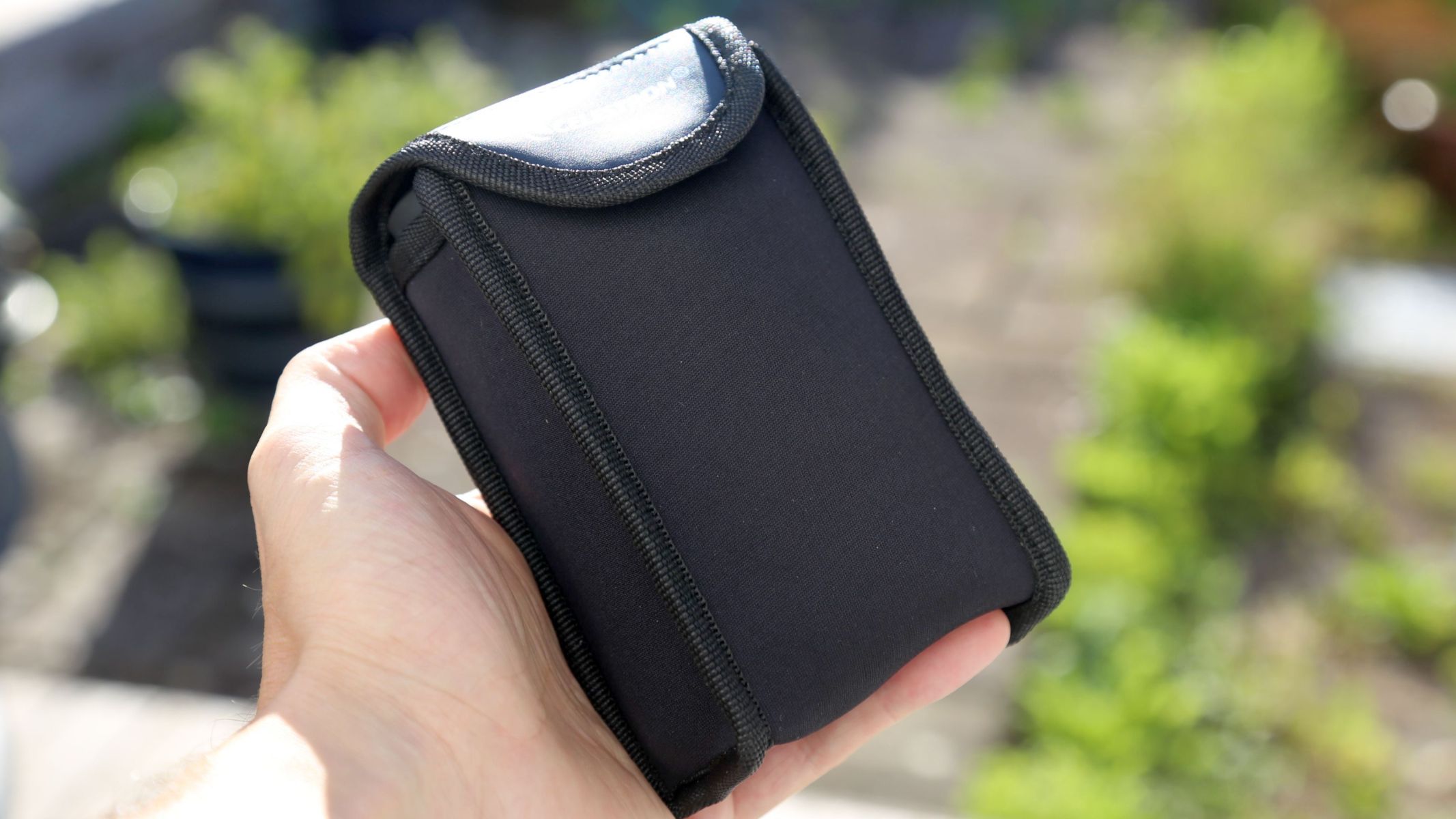
- Simple to use thanks to their roof prism design
- Easy to hold still due to the lower magnification
- Small fiddly size, especially for those with larger hands
Solar binoculars like the Celestron EclipSmart 10x25mm aren't as easy to use as you might think. For starters, because all you can see is the sun through them you get nothing for context. It's often therefore quite tricky to find the sun. The best way is to face the sun with the binoculars already in front of your eyes as you lift them up from the horizon to the sun while also gripping the binoculars around the eyecups, thus making it more difficult to glimpse the unfiltered sun with your eyes.
Wearing a wide-brimmed hat while doing this helps shield your eyes from the sun. It's actually easier to find the sun with the Celestron EclipSmart 10x25mm than with almost any other solar binoculars because of the wide angle. As a bonus, since the Celestron EclipSmart 10x25mm are so light they're easy to hold very still, so during the review I had a nice, stable view. That's ideal for watching the progress of a solar eclipse.
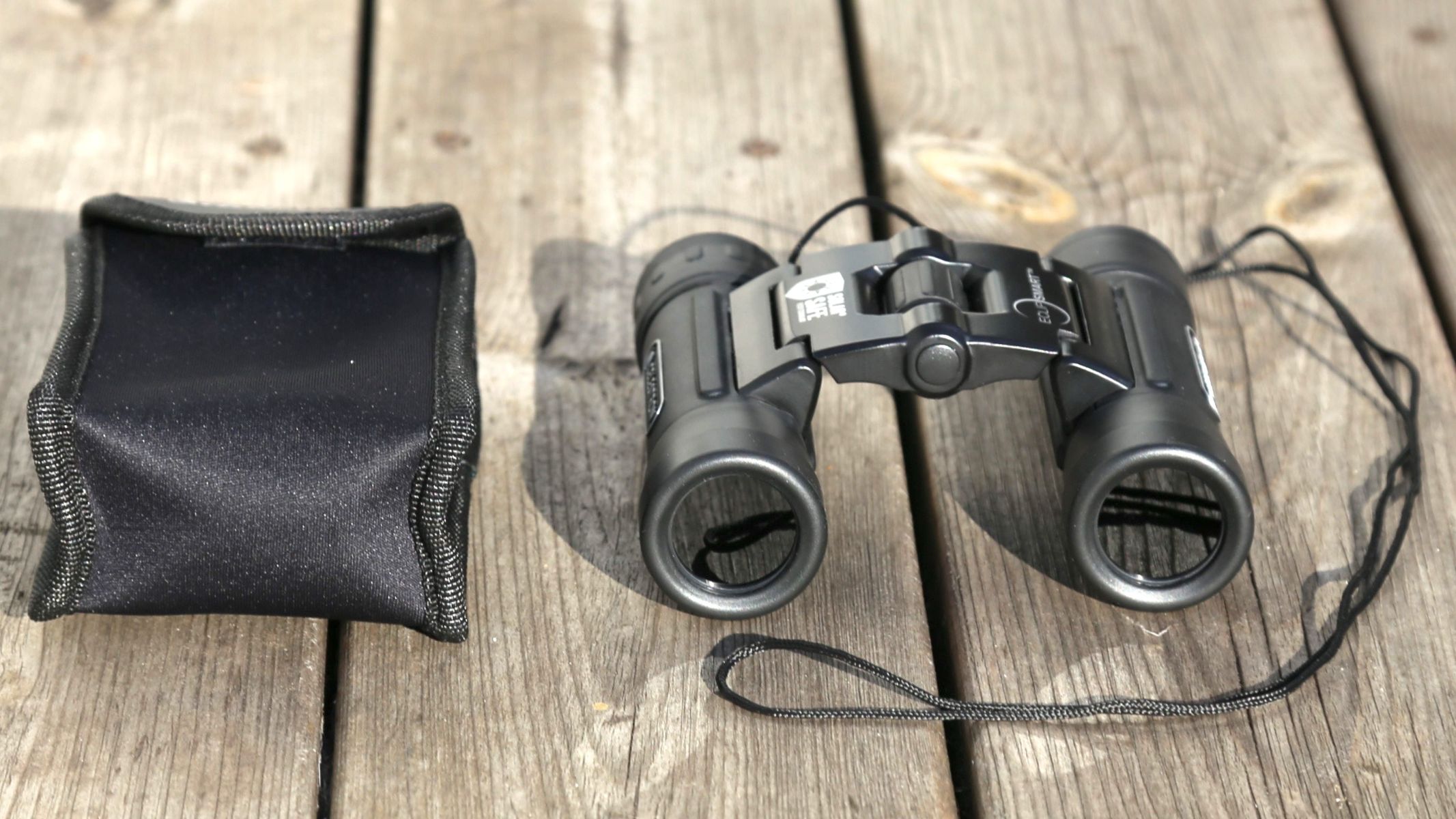
However, the Celestron EclipSmart 10x25mm is small. That comes with advantages, but their tiny size does make them slightly fiddly to use. It mostly depends on your own physical size; large hands are going to find them cumbersome.
Should you buy the Celestron EclipSmart 10x25mm roof solar binoculars?
The Celestron EclipSmart 10x25mm roof solar binoculars are affordable, compact and portable, but they're not optically amazing. What they are perfect for is a simple upgrade on solar eclipse glasses. After all, their non-removable solar filters are fine for anyone viewing the sun at any time, and for a partial solar eclipse — which includes all parts of an annular solar eclipse and most phases of a total solar eclipse — but it's a problem if you're in the path of totality during a total solar eclipse.
After all, you'll want an unfiltered view of the solar corona during those precious few minutes. So the Celestron EclipSmart 10x25mm roof solar binoculars are best considered as something for keeping an eye on the progress of the partial phases before switching to a pair of 10x50 (or similar) unfiltered binoculars for totality itself.
If the Celestron EclipSmart 10x25mm roof solar binocular isn't for you
Also in Celestron's EclipSmart range are their porro prism line-up, including the 10x42, 12x50 and 20x50 model variants. Their porro prism binoculars are bulkier than the pocket-sized roof prism binoculars reviewed here but offer brighter and more magnified images. However, beyond 10x magnification, the additional weight makes it much more difficult to hold them steady, so you'll definitely need one of the best tripods to hold them steady.
Celestron's main rival in solar binoculars is Lunt, which makes the SUNoculars Mini 6x30, which are similar in size to the Celestron EclipSmart 10x25mm, but not as impressive. However, Lunt does make the impressive SUNoculars 8x32 roof binoculars, which offer a good compromise between weight and extra magnification.

Jamie is an experienced science, technology and travel journalist and stargazer who writes about exploring the night sky, solar and lunar eclipses, moon-gazing, astro-travel, astronomy and space exploration. He is the editor of WhenIsTheNextEclipse.com and author of A Stargazing Program For Beginners, and is a senior contributor at Forbes. His special skill is turning tech-babble into plain English.
